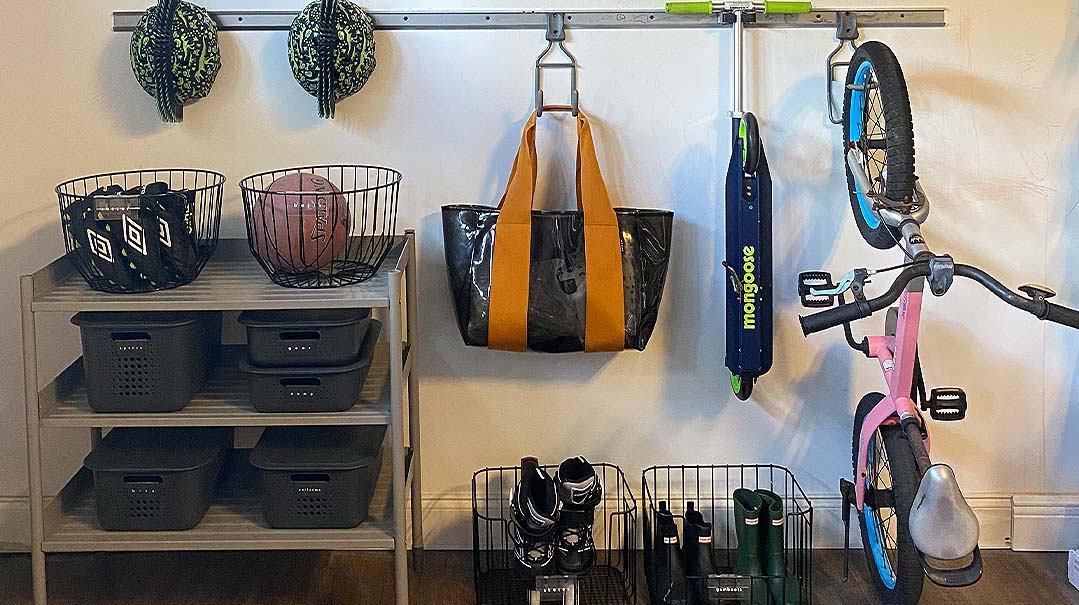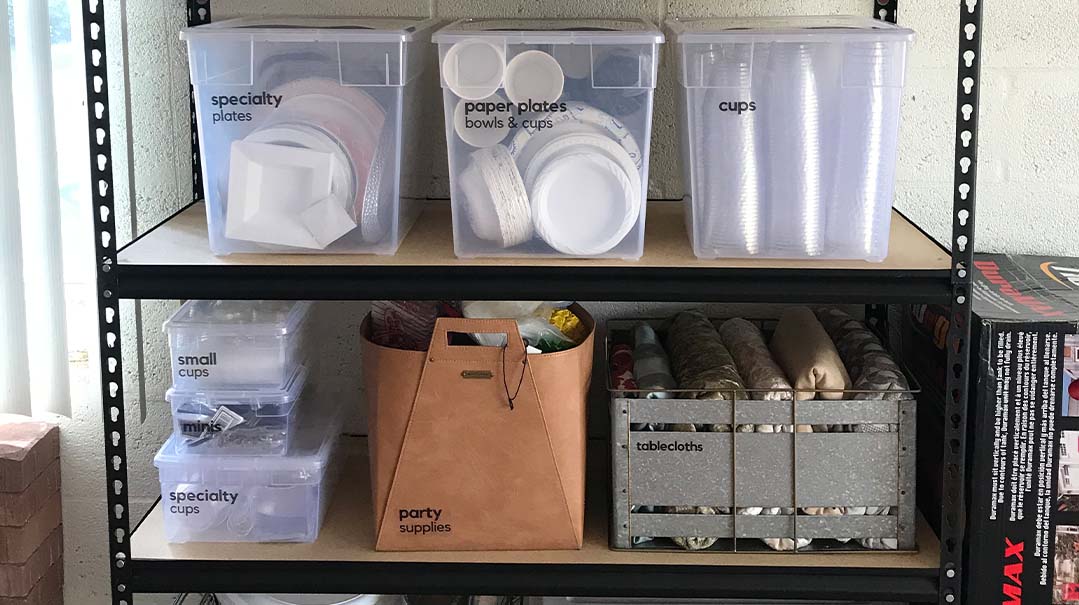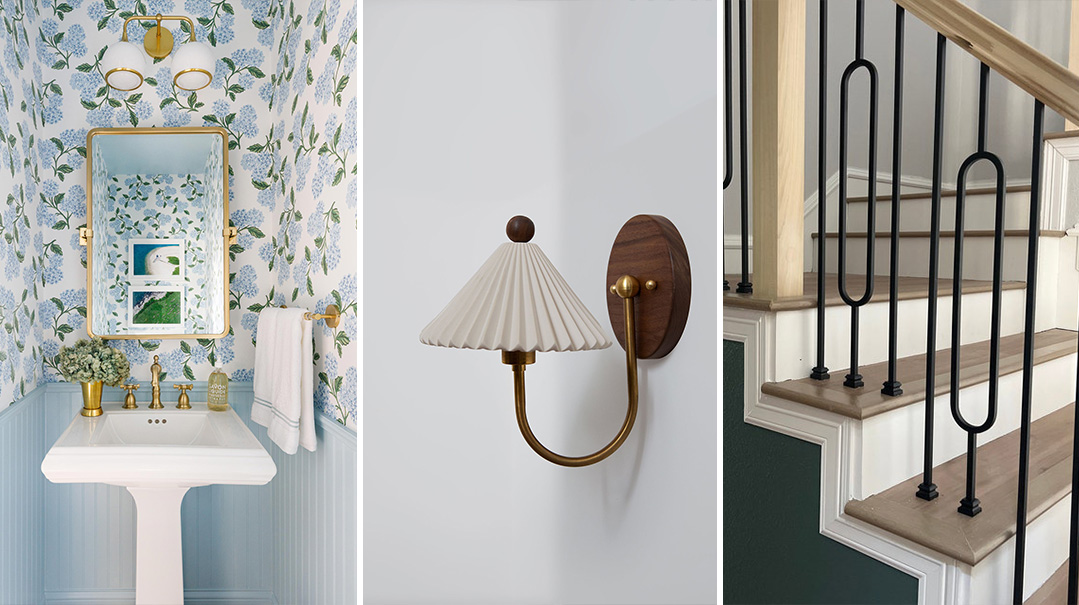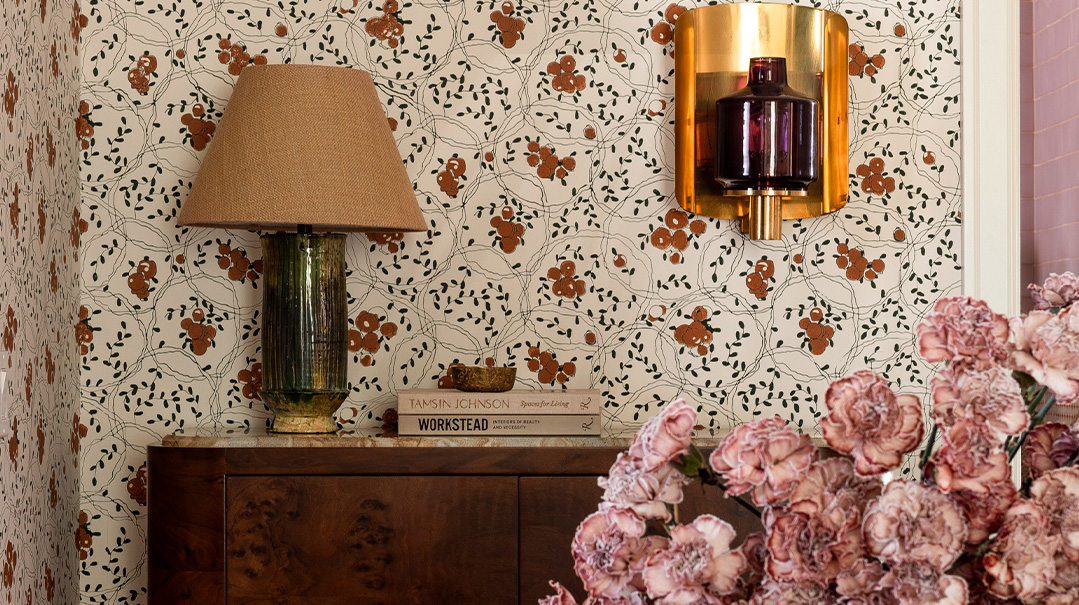The Organized Garage
| February 22, 2022Two expert organizers give us simple decluttering tips to take your storage area from difficult to navigate to light and bright

One thing we didn’t learn in school was organization and just how big of a role it would play in successfully running our busy lives. For some people, being organized comes naturally — it’s the way their brain thinks, sort of like a computer program or an autonomous car — and others were fortunate to have been taught these skills at a young age. Many people translate these skills into complex list making, Excel spreadsheets, bulletin boards, or using their smartphone as their very own personal assistant. For others, organization doesn’t come as easily, and it’s a skill set they need to learn and develop on their own.
Everyone (yes, everyone) needs structure and some type of an organized system to stay mentally healthy and to flourish. Too often we’re held back by the clutter that surrounds us (no — we’re not here to tell you to become a minimalist, and yes, we shop at Costco and buy in bulk, too), but with good systems in place you can have both. Promise.
Let’s Get Started
The items you keep in your garage can often be broken down into two basic groups, back stock and storage. A few general rules:
View your garage as your own personal mini supermarket. Your back stock area, in essence, is for all those extra rolls of toilet paper you got on a “buy one, get one free” sale, or for the cases of disposable paper goods you bought for Pesach. It should be the place you head to when you need to restock your foil pans, paper plates, or shampoo.
Bulkier and bigger items that are used daily, or even weekly (that’s often enough in our books), like a Crock-Pot or a sous vide, shouldn’t be stored in a garage. Use this space exclusively for things that aren’t used too often like Pesach boxes, Chanukah items, snow gear, unused strollers, extra car seats, etc.
Make sure to constantly check and edit (read: donate or throw out) your items — specifically the crib with the broken side bar, the random chair with the wobbly leg, and the rusty bike.
Construction debris: Is your garage cluttered with old paint cans from when you remodeled your kitchen three years ago? Dispose of those old paints (they don’t last more than six months anyway) and instead keep the printed paint sample or color name that you get at the store when choosing your colors. Make sure to write down the room or rooms you used the color in and the date you painted.
If you plan to use your paint within the next six months and want to hold on to it, make sure to write the finishes and the rooms it was used for on the can, especially when dealing with similar colors.
Leftover construction supplies don’t need to take up space. Some things are handy, but most of it can go directly to the garbage.
Practical Details
We believe that a space should be organized, well planned out, customized, and also beautiful. Here’s how to accomplish this.
Containers to use: Clear bins are always a go-to when we organize a garage or basement. When you’re in a rush, having clear bins so you don’t have to read each label helps speed up the process and prevents frustration.
The importance of labeling: Like most organizers, we love our labeling and do not think it’s overrated! When a container has a clear label, anyone and everyone in your home will know where to find things — and, more importantly, where to put things away.
Creating a streamlined aesthetic: Use all the same type or style or at least color containers throughout your storage spaces. This will visually reduce the look of clutter and the overwhelming feeling of “stuff” in your garage.
Visual aesthetics are such an integral part of the process because they help the space feel light and organized — automatically giving you a feeling of calm and inner peace, which can also motivate you to upkeep and maintain the space.
Weather-proofing: Garages and basements are at the mercy of the elements. They’re usually not insulated and, besides the rain and snow, are also subject to bugs. (Side note: Cardboard boxes often bring roaches. Yup. We see it all the time. Dispose of them immediately.)
Our go-to storage container that protects against the elements and mold and mildew is the Iris weather-proof tote. They’re pricier than the regular clear container, but they have an airtight seal that protects your items. No point in wasting the storage space and keeping clothes from one child to another only to discover it all has to be thrown out. Likewise, keepsakes, heirlooms, and priceless items have to be stored in a way that will ensure they last. Not only are these bins practical, but they also come in a variety of sizes, stack nicely, and allow your space to look as good as it feels.
Open storage: For your personal mini supermarket, where there’s a constant flow of items coming in and out, we suggest open multi-purpose bins from the Container Store. They’re budget friendly (pricing from $4.99 to $8.99 for the XL), come in a variety of sizes, and make use of (otherwise wasted) vertical shelf space.

Set Up and Placement
Sorting: As simple as this may sound, this is probably the most important aspect of an organized space. When organizing, always categorize like items together and think in terms of zones. For example, use different containers or bins for emergency items, tools, lawn care, baby essentials, travel gear, cleaning supplies, etc. Having a solid system will determine how functional your storage space is. When sorting for our clients, we separate directly into zones, take note of what each family has, and designate a place for each zone before we even put anything on the shelves.
Location, location, location: The “prime real estate” theory goes hand in hand with the above concept. When setting up your zones, things you reach for all the time or things you’re constantly running out of should be easily accessible. Don’t have the items you use less often right as you enter and the items you go to more often shoved in the back.
When organizing your space, ask yourself, How often do I use this? Regularly used items should be easily accessible and (unless dangerous for young kids) at arm’s reach. If you feel like something is a bother or a pain to get to, re-assess where that item is and adjust accordingly.
Use your wall space: Don’t underestimate your vertical wall space! Think big, but smart, and store folding chairs, stepladders, bikes, and other bulky items off the ground and on the walls. The Container Store offers a myriad of utility hooks for all sorts of bulky items.
Upkeep
Labels: We love them. We personally like to use the Brother P-Touch cube. Labels can be made using an app on a smartphone, or from a computer and printed via Bluetooth. They can be big, they can be bold, and they can be in multiple fonts, colors, and styles. You can even print images for kids who aren’t reading yet! The best part is that they’re totally customizable and can be completely unique. When everything is labeled (even if it’s just a basic category like pantry, cleaning, laundry, etc.), everyone knows where to find things — and most importantly, where to put them back so next time they’re actually there. (Imagine that!)
Keeping track of quantity: Setting up an “Almost Out of” list is a simple but effective way to maintain order and calm. It keeps everyone on the same page, with no more panic runs to the store, since you know when you’re on the last bottle of ketchup, box of 9x13 pans, or even gas tank. We actually have a customizable list on our website!
Bye-bye are the days of shutting doors and apologizing for the mess. Show off your newly, beautifully organized space. Be proud.
Tal and Leah are two busy moms who bonded over their shared passion for leading a more productive life. They believe that the calm one channels and the more pride one takes in an organized space, the more of a positive tone one sets in the home. Think of us as a physical and mental cleanse duo, bringing you and your home back to a healthy balance. Find us at thebinnedteam, text/WhatsApp 954-729-8883, or email thebinnedteam@gmail.com.
(Originally featured in Family Room, Issue 25)
Oops! We could not locate your form.






